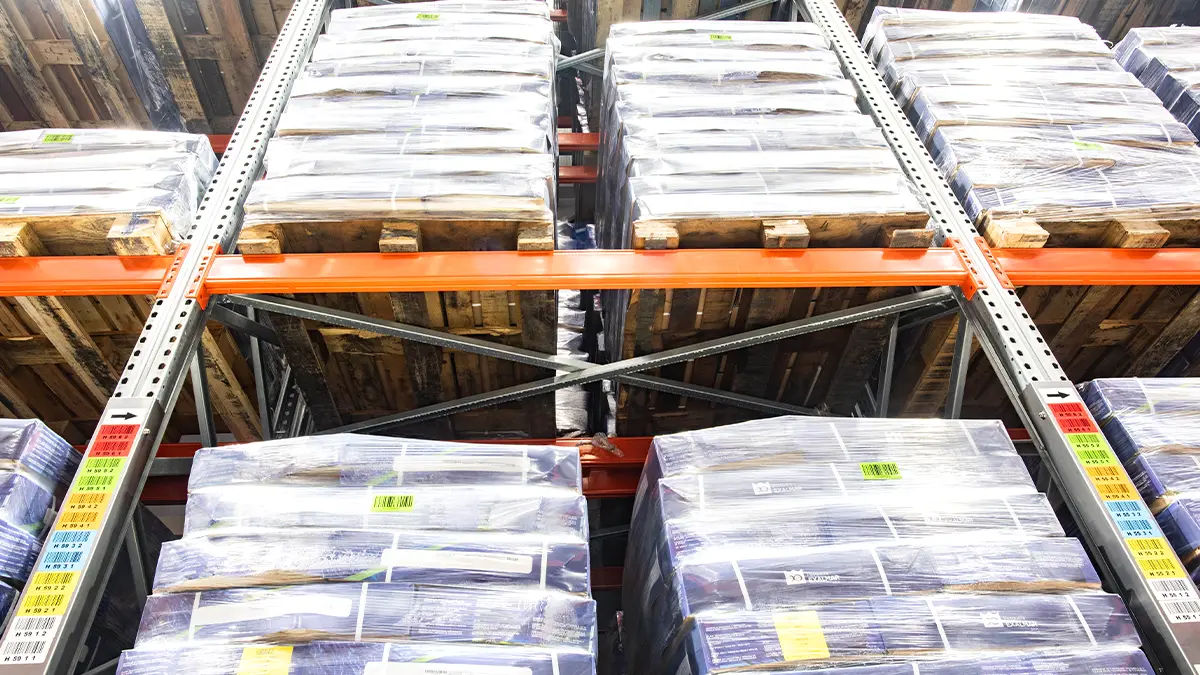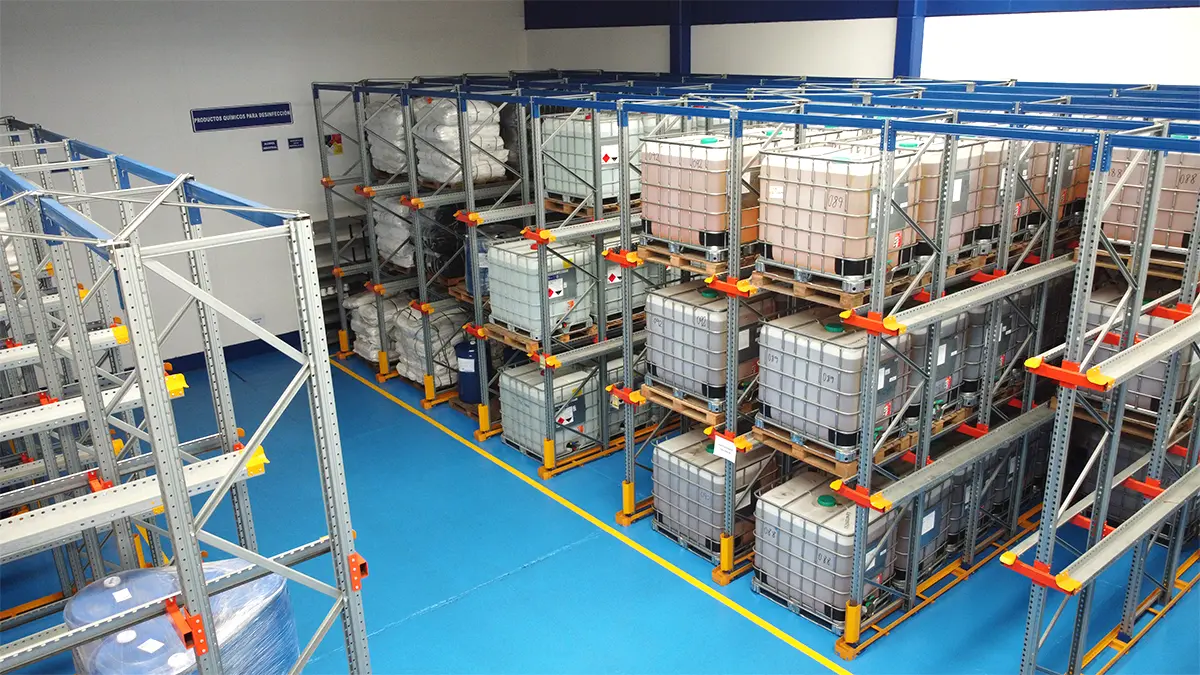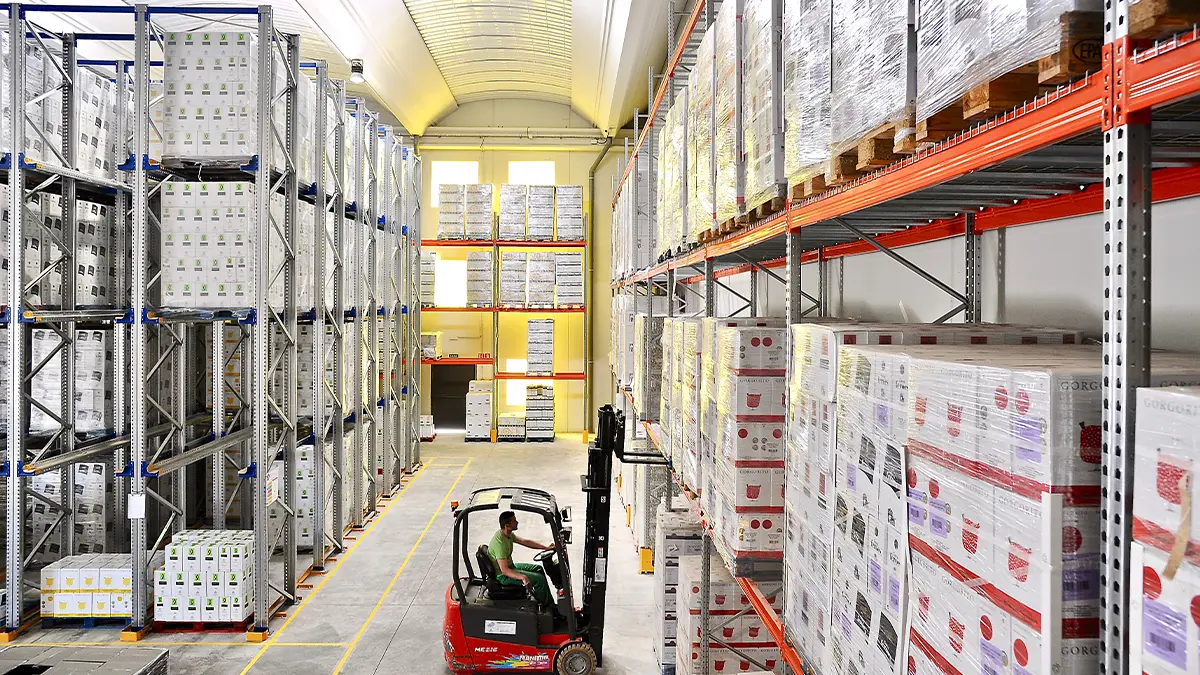Chemical companies face the challenge of keeping their products in perfect condition with optimum safety throughout the supply chain, including the storage phase.
In this publication we will look at the main difficulties and challenges of storing chemicals industrially and the key points to consider to safely store chemicals in a warehouse.
Organisation and types of chemicals to store
It is important to know firstly in detail the type of chemical to be stored, in order to adapt the characteristics of the warehouse and the storage system.
Chemicals are compounds created in industrial or laboratory processes and have various uses and applications in our society today.
Chemicals can be classified in several ways, differentiating between organic and inorganic chemicals depending on whether their composition is based on “carbon” or not.
The classic differentiation can also be made by their state of aggregation between solid, liquid and gaseous, which will have an implication on the volume and weight of the product to be stored.
The main way to list the chemicals to be stored by types is as follows:
- Flammable liquids
- Acids
- Compressed gases
- Hazardous volatile substances
- Hazardous non-volatile liquid substances
- Liquid bases
- Liquid oxidants
When installing industrial racking where chemicals are going to be stored, the chemical compatibility of the products must be carefully known. Chemical compatibility indicates the degree to which a chemical can have contact with another without causing corrosion or negative changes in its characteristics.
If two chemicals do not change when they mix, they are compatible with each other. If, however, they change or do not mix, they are incompatible chemicals and special care must be taken with the separation between them in the warehouse.

Chemicals are also classified by their hazard level, with each one accompanied by a special type of label for differentiation in every phase of the supply chain:
- Explosive
- Oxidising
- Flammable
- Toxic
- Harmful
- Corrosive
- Irritant
- Sensitising
- Carcinogenic
- Mutagenic
When categorising, organising and planning the storage of chemicals in a warehouse, the information provided in REACH regulation (EC) No 1907/2006 concerning the registration, evaluation, authorisation and restriction of chemicals must be referred to.
The guidelines indicated in the Regulation on the Storage of Chemicals (RAPQ), whose objective is to establish the necessary safety conditions of storage, loading, unloading and transfer facilities of hazardous chemicals, must also be followed.
Difficulties and risks of the storage of chemicals
As shown, there are many variables to consider in the storage of chemicals and implementing this process is quite different to that of a conventional warehouse.
Before analysing how to do so, the main difficulties that arise in the safe storage of chemicals should be considered:
- The greater the variety and quantity of chemicals stored, the greater the warehouse risk and therefore the stricter the safety measures should be.
- Warehouse operations will be more difficult because more hygienic conditions and special personal protective equipment (PPE) will be necessary.
- Intensive training must be provided to the entire team of warehouse workers on chemicals, safety and prevention of occupational hazards.
- Storing chemicals for long periods will pose an added risk to the installation, so inventory control will be a priority task.
- If the established safety measures are not observed, the risk of explosion or decomposition of the chemicals is high.
- The inspection and maintenance of the unit loads, drums and containers that contain the chemical products are very important since they can degrade over a long storage period.
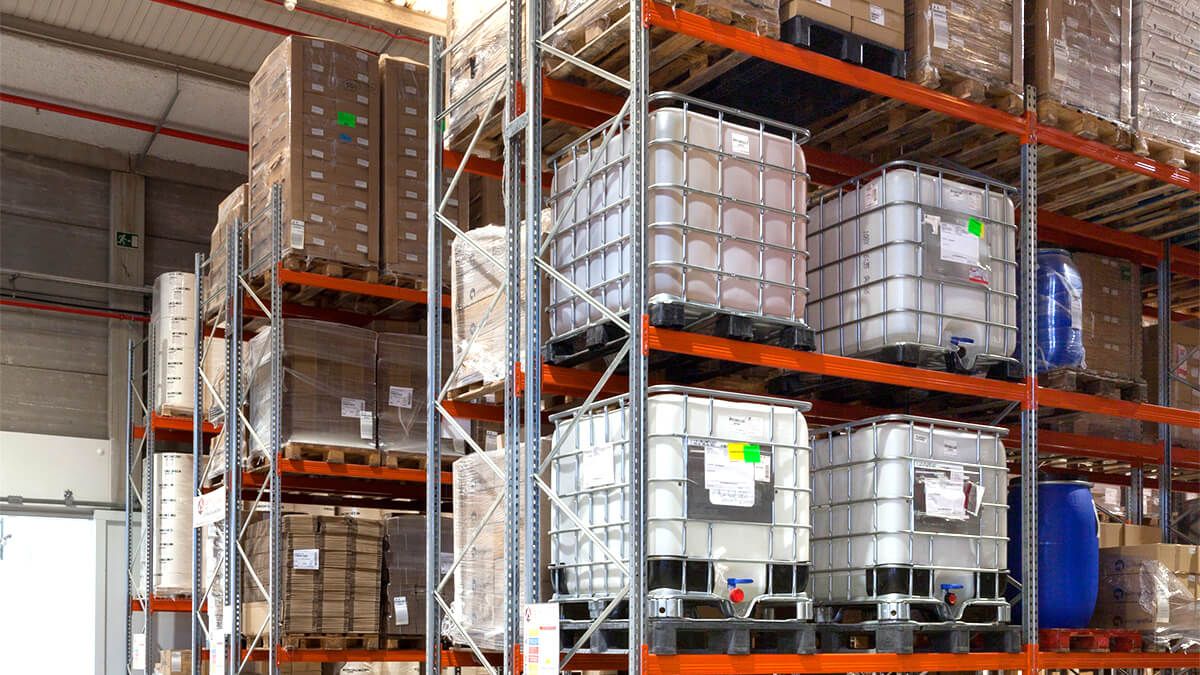
How to store chemicals in a warehouse racking
Once the types of chemicals to be stored are known and the risks inherent in the storage of these types of goods considered, we focus on the process to follow to design the warehouse and the appropriate storage systems for chemicals.
The main solutions for storing chemicals with maximum safety are:
Limiting the stock level of chemicals
Stock levels of chemicals must be kept as low as possible in the warehouse, since the more product stored in the same space the much greater the danger.
To try to reduce the thermal and chemical load of the storage space, industrial racking systems should be installed that enable efficient product rotation, that allow each load unit to be stored for short periods of time and that increase order frequency.
FIFO type storage systems will allow this correct product rotation and reduce the storage risks of chemicals.
Design of a warehouse layout by sections
The design of the layout of the warehouse is always a key task in a company’s logistics operation. For companies that store chemicals this stage is critical.
The layout of these warehouses should be designed with divisions in different sections depending on the type of chemical to be stored.
If the chemicals are not compatible, these sections must be tight against each other, isolating the different types of chemicals at all stages of the supply chain.
These sections, still forming part of the warehouse itself, will have an independent working with different operations and specific safety measures.
It will also be necessary to isolate those more hazardous and toxic chemicals from the rest of the goods.
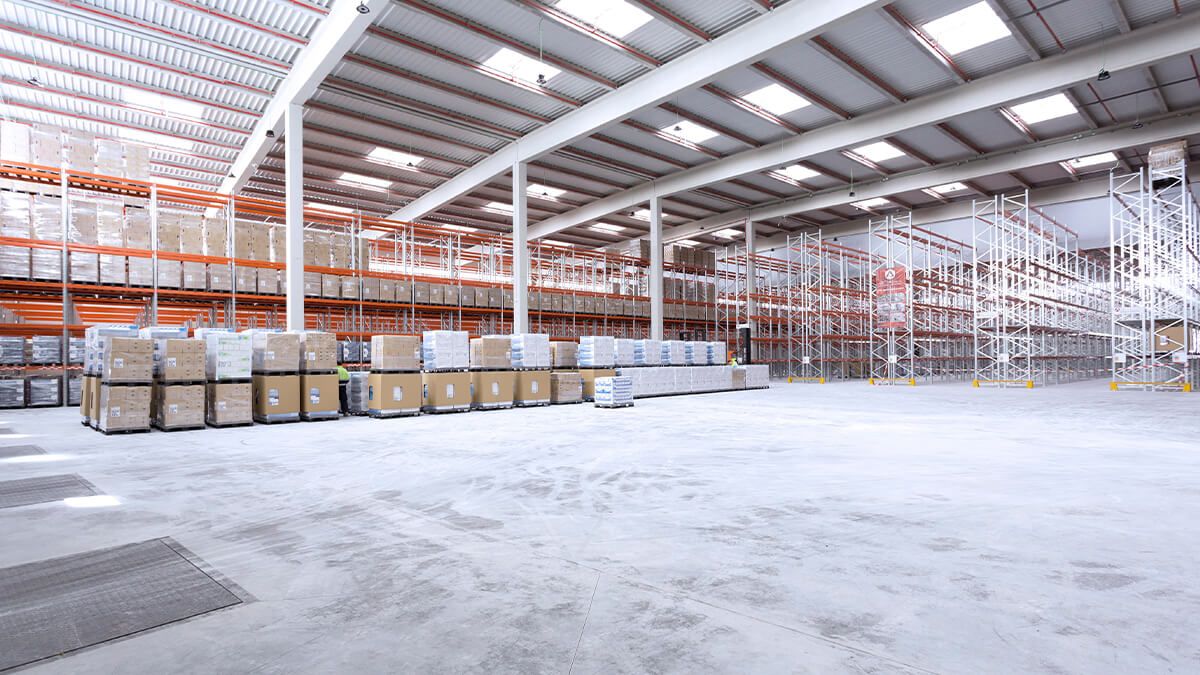
Priority to inventory management and maintenance
Stock management control in chemical warehouses must be intense and detailed, since any stock error can have serious consequences.
It is necessary to keep regularly up-to-date the inventory data of the goods, the traceability of the product from its origin to its future destination, monitoring reception dates and scheduled dispatch dates avoiding long storage periods.
To ensure simple stock management, correct product labelling is essential. Each unit load must indicate on the label its hazard classification and other logistical information.
Regular maintenance controls of the storage systems and the loads will also be necessary to check, in addition to the industrial racking, the condition of the unit loads or containers that contain the chemical substances to check their safety and prevent their deterioration.
Complete prevention and emergency plan
In addition to the above points, a complete risk prevention and emergency plan must be developed to achieve an optimum safety level in chemical warehouses.
Workers must receive training on chemicals and the different protocols to be followed inside the warehouse.
Furthermore, the emergency plan in case of accident must be known and correctly indicated inside the facility.
The access of people and vehicles that do not know these plans must be controlled.
Emergency routes must be kept clear and clean, without any unit loads or parked vehicles stationed on them that could hinder a rapid evacuation.
If you need to install industrial racking to store chemicals, our team will provide you obligation-free advice by clicking here.











